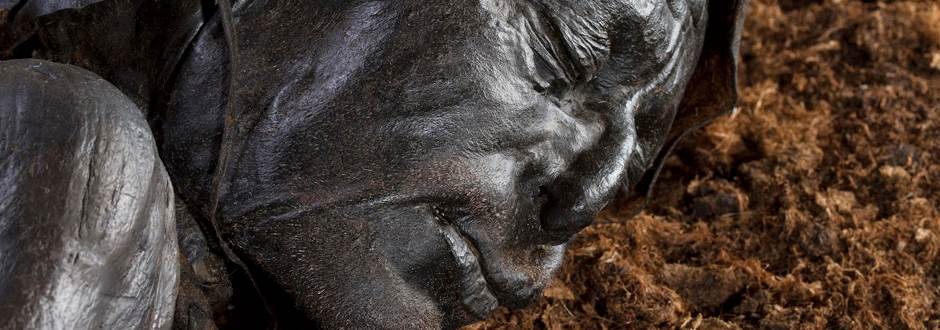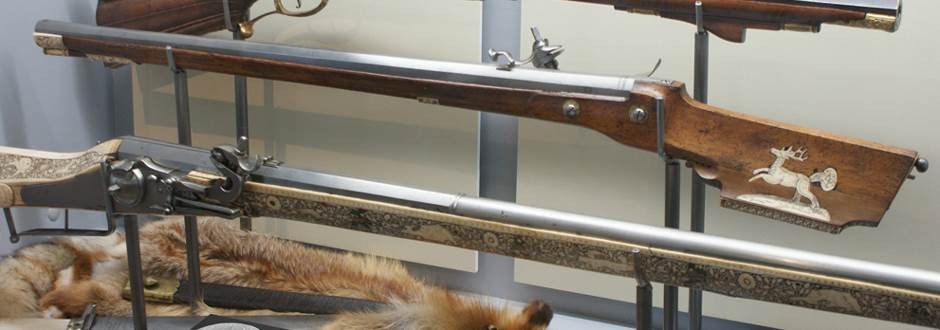Tollund Man and Elling Woman
 The main attraction of Silkeborg Museum is the body of Tollund Man. He was discovered in the Bjældskovdal bog some 10 km west of Silkeborg in 1950 by the brothers Emil and Viggo Højgård. The bog body was so well-preserved that their immediate reaction was to call the police. The police in Silkeborg had an idea of the true facts of the case as bog bodies had been discovered previously (in 1927 and 1938) in the same bog, so they called in the museum staff. The farms of Emil and Viggo Højgård were in the village of Tollund; thus the best preserved bog body of the world came to be named Tollund Man.
The main attraction of Silkeborg Museum is the body of Tollund Man. He was discovered in the Bjældskovdal bog some 10 km west of Silkeborg in 1950 by the brothers Emil and Viggo Højgård. The bog body was so well-preserved that their immediate reaction was to call the police. The police in Silkeborg had an idea of the true facts of the case as bog bodies had been discovered previously (in 1927 and 1938) in the same bog, so they called in the museum staff. The farms of Emil and Viggo Højgård were in the village of Tollund; thus the best preserved bog body of the world came to be named Tollund Man.
Professor P. V. Glob, Aarhus University, arrived and saw to it that the bog body was transported to the National Museum of Copenhagen for further examinations. Researchers now stood face to face with an ancient person, one of our Iron Age forefathers. Tollund Man was laying in a relaxed position, his legs bent against his abdomen. His face was alarmingly well-preserved, his lips, nose, eyelids, eyebrows, wrinkles, stubble, hair - a face with its quite personal features, yet common to all mankind. The naked body had been placed in the peat bog, like a sleeping body, a cap on his head, a belt round his waist. A braided leather rope around his neck unveiled the cause of death: by hanging. Behind the apparent peace and tranquility was a glimpse of horror and drama.
Tollund Man became the object of many scientific examinations. Carbon-14 datings show that he died around 350 BC, i.e. early Iron Age. His age is estimated to be 40 years; his body heigth of 161 cm makes him a somewhat small man, even in his time. Finger prints and footsole patterns of the old Iron Age man are like those of many modern men. Two scars on his foot show that he must have walked barefoot part of the year and sometimes cut his foot; a couple of times so deep a cut that it was evident 2350 years later. His foot also showed a certain use of footwear. Tollund Man was clean-shaven and his hair was cut short. When we see stubble on his face today, it is due to the fact that he did not shave on the last day of his life, and his skin shrank a bit in the bog and during the preservation process. The reddish colour of his hair and beard is caused by the bog water.
Forensic experts extracted the stomach and intestines of the old body for examinations. A botanist examined the remains of his last meal and concluded that Tollund Man had eaten a gruel or soup of some 30 different plant seeds, notably primitive barley, linseed, gold-of-pleasure, and knotgrass. His meal was purely vegetarian.
Why Tollund Man was hanged and buried in the peat bog we shall never know. But his fellow men did not treat him like a criminal: after he died, they carefully closed his eyes and mouth and carried him to the peat bog, where he was laid to rest with care. This bears witness to a dignified burial. Thus it is reasonable to see Tollund Man as a human sacrifice to the god or gods. Maybe to the god of the bog, he who gave men peat and other goods. Early Iron Age societies cremated their dead, only bog bodies had a different burial - perhaps the gods would be appeased by a whole body only and not by burnt bones.
Tollund Man had stayed in the bog for some 2350 years when Emil and Viggo Højgård found him in 1950. What made the discovery at all possible, is the content of bog acid in peat bogs, this acid has a tanning effect. When the body was uncovered, it was decided to try to preserve the head, a foot and a finger. The preservation proved a success, and in 1952 the head of Tollund Man was the highlight of the prehistoric collections when Silkeborg Museum opened in its new premises, Silkeborg Manor.
Elling Woman is a bog body of approx. the same time as Tollund Man. She was found in 1938 50 m from the spot where Tollund Man appeared 12 years later. Elling Woman had also been hanged, and we presume that she was also sacrificed to the god or gods.
The museum has built its Iron Age exhibition around Tollund Man and Elling Woman and displays replicas of Iron Age clothing, hair styles, iron smelting ovens and other artefacts of their time - the early Iron Age.






Følg os her: